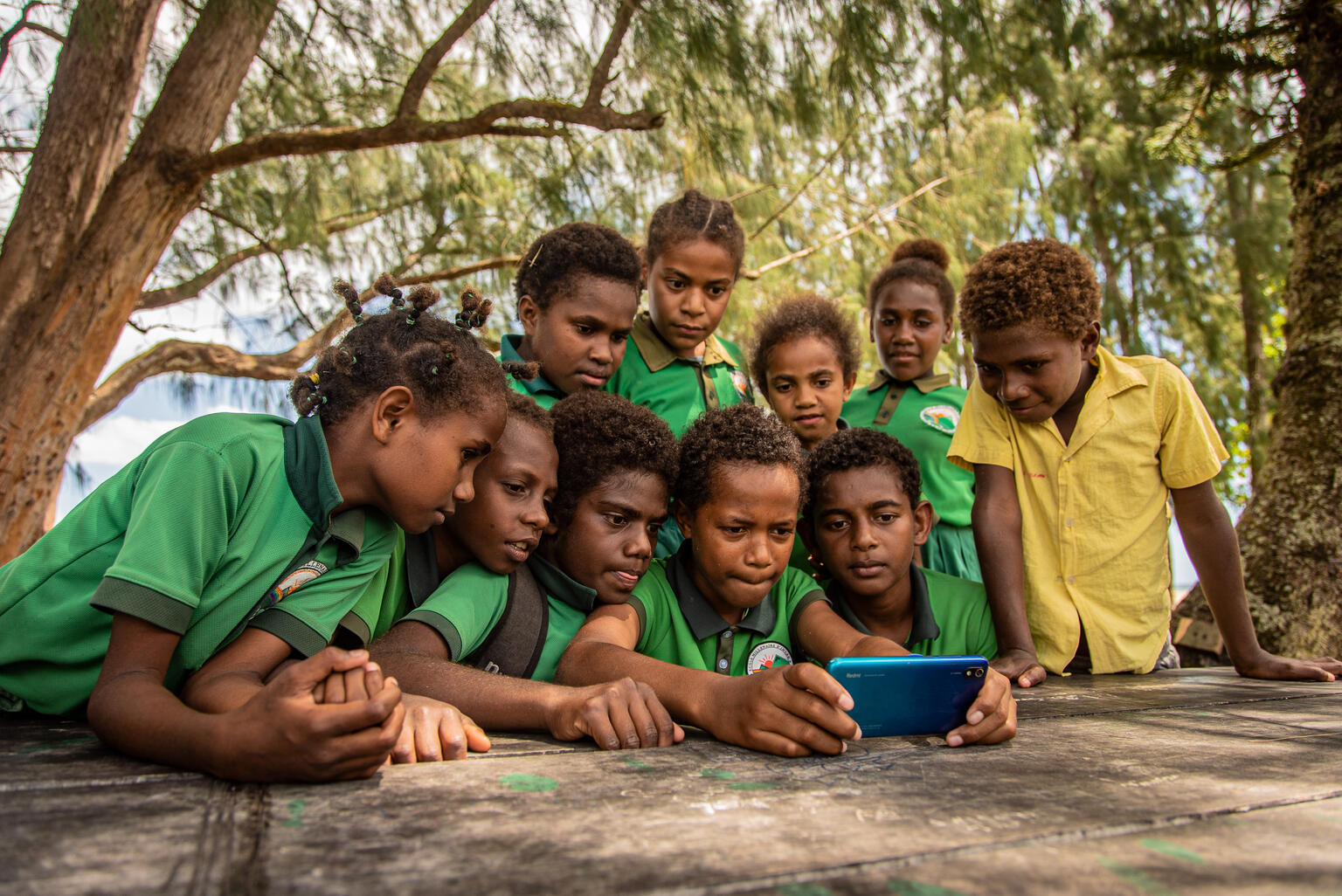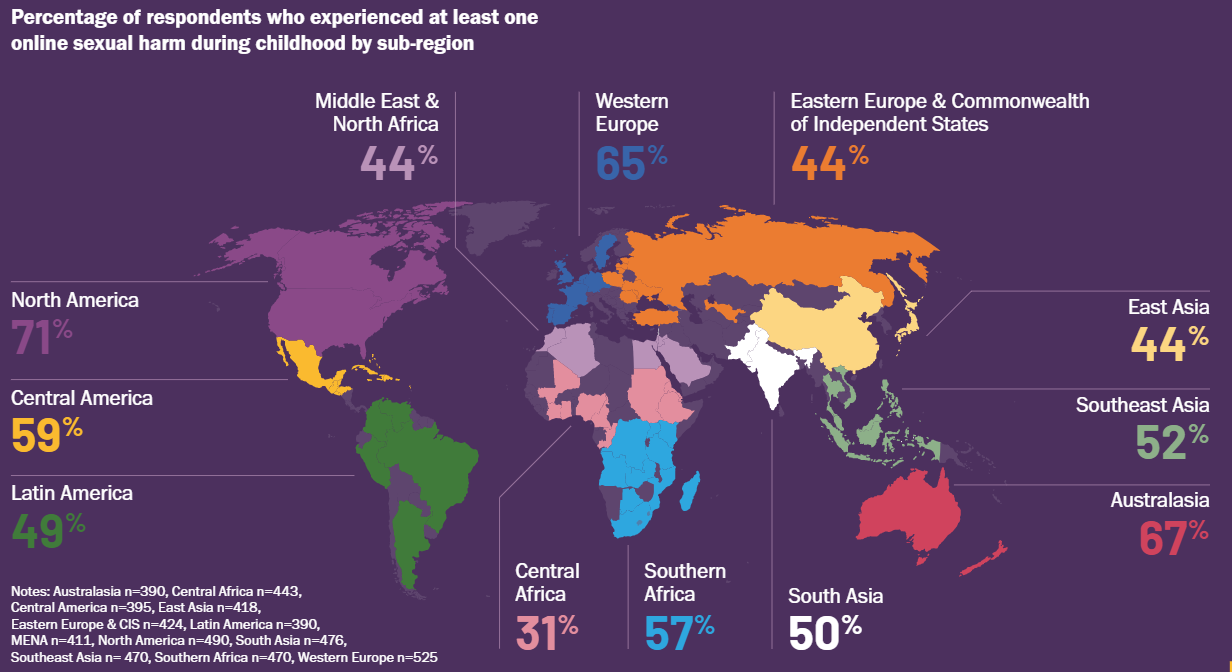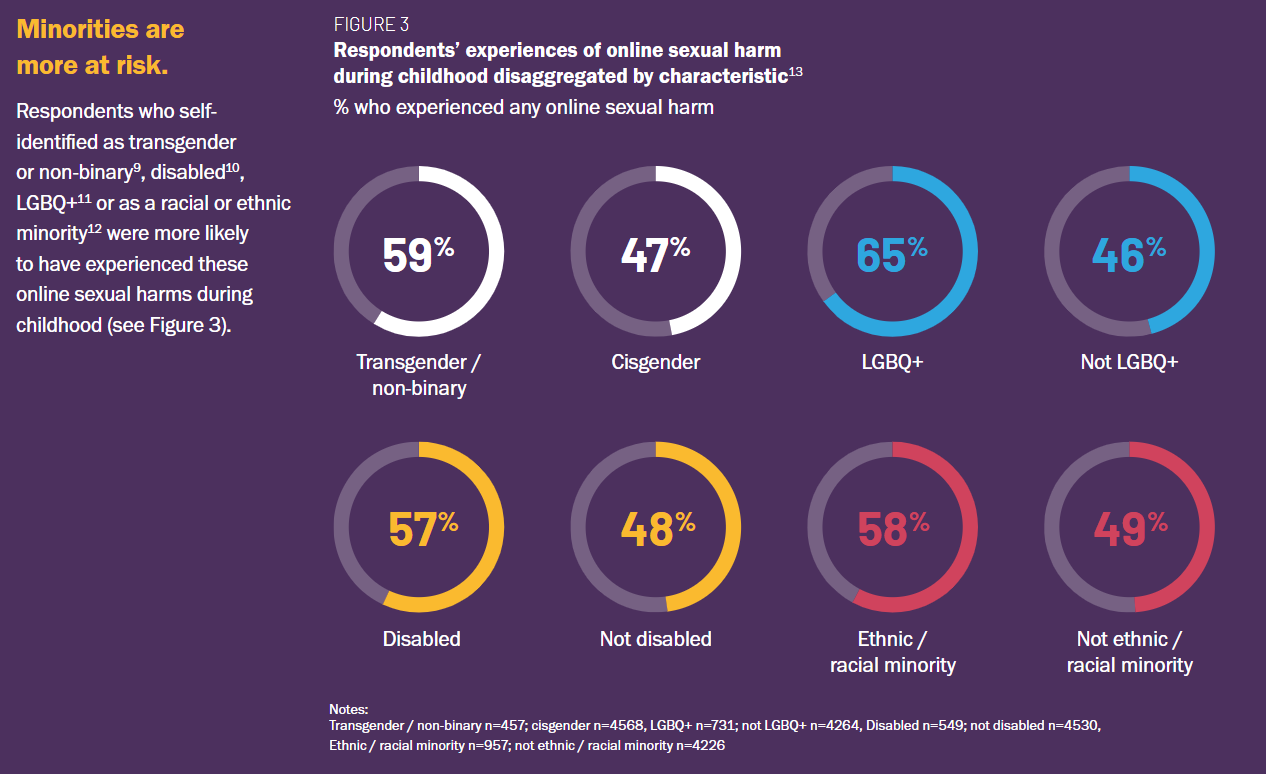
“Prevention represents the best route to ensuring the sustainability of the future response,” the report states. “Together we have the knowledge, means and opportunity to take action, improve the global response, and prevent more children from being harmed.”
Together we have the knowledge, means and opportunity to take action, improve the global response, and prevent more children from being harmed.
This year’s report vividly paints that picture. By drawing evidence from organizations across the ecosystem, the Global Threat Assessment indicates an increase in not just the volume of child sexual abuse material online, but also the sharing and distribution of such material, livestreaming for payment, and the incidence of online grooming.
WeProtect has collated valuable information, including trends from other organizations. From 2019 to 2020, the National Center for Missing & Exploited Children, for example, has seen a 106 per cent increase in reports from the public relating to online sexual exploitation, while the Internet Watch Foundation has seen a 77 per cent increase in child self-generated sexual material.
Importantly, the report also noted that online child sexual abuse is happening everywhere. Through a survey of over 5,300 18-20-year-olds who had regular access to the internet as children, WeProtect found that 57 per cent of girls and 48 per cent of boys had experienced at least one online sexual harm, with some regions – like North America, Australasia, and Western Europe – being even higher.
That percentage ticked even higher with vulnerable populations: respondents who identified as transgender, non-binary, LGBQ+, and/or disabled were more likely to experience online sexual violence by as much as 19 per cent higher than their counterparts.
“The Global Threat Assessment report launched today paints an alarming picture of the growing scale and evolving threat of online child sexual exploitation and abuse,” said Dr Howard Taylor, Executive Director of the End Violence Partnership. “It is an urgent call for collective action to invest in technology, data and solutions, alongside improved regulations – to not only respond to this crime, but to make the internet safe for children by preventing it from happening at all.”
Throughout the report, WeProtect focuses on three themes: COVID-19; technology; and regulation, voluntary cooperation, and transparency. It also dives into the most pressing threats facing children online, with a focus on grooming for sexual purposes; the production, searching, and viewing of child sexual abuse material (including livestreaming and self-generated sexual material); and the sharing and storing of child sexual abuse material.
Our global response to this crime needs a new approach, or more children will continue to be placed at risk and suffer the trauma of abuse.
By analyzing this information, the report identifies four focus areas to prevent such abuse, including internet regulation; law enforcement capacity-building; voluntary co-operation; transparency and online safety technologies; and societal initiatives.
“Our global response to this crime needs a new approach, or more children will continue to be placed at risk and suffer the trauma of abuse,” the report reads.
Learn more by exploring the report in full.
Photo credit: UNICEF/UN0441162/Shing


